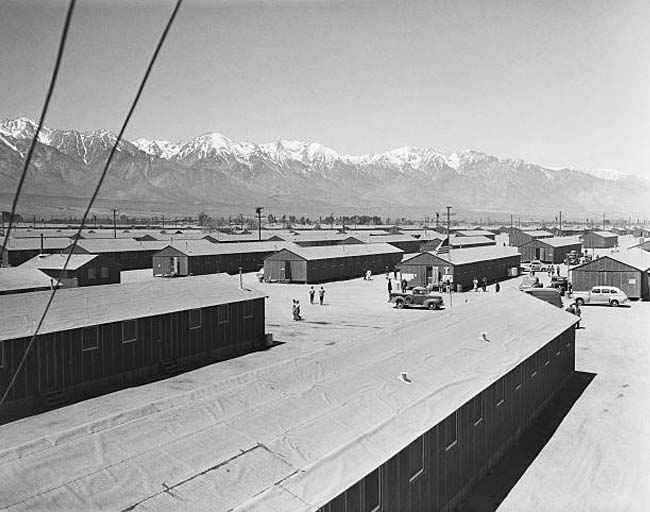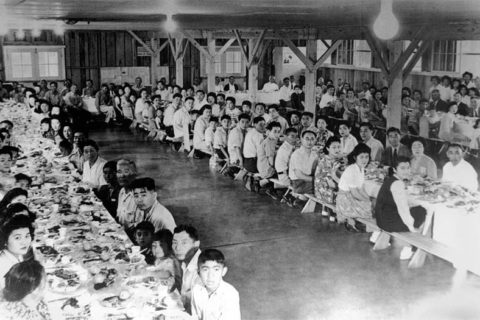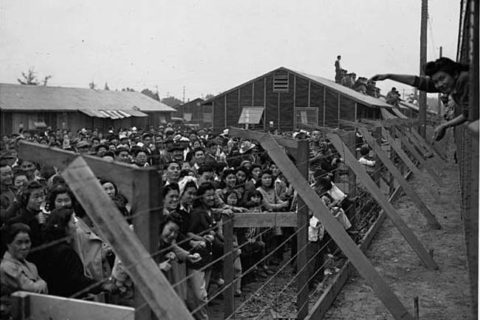During World War II or WWII, Japanese-Americans who were living in the United States were forcibly removed from their homes and sent to the places known as internment camps. These camps are mass incarceration. If you are a Japanese-American who is interested about your ancestors or if you are just someone who is into history, you might be wondering why Japanese-Americans were sent to internment camps. In this article, you will be able to find all reasons that made these people sent to such hideous places so please keep reading until the end.

Historical Background
The Japanese-Americans were sent to internment camps between 1942 and 1945. The event mostly affected those who were living on the West Coast of the United States. In order to understand why it happened, please consider the following historical contexts:
- Pearl Harbor and wartime fears
On December 7, 1941, Pearl Harbor was attacked by Japan, causing the United States to draw into World War II. Due to this bombing, the United States was afraid of Japanese espionage and sabotage on American soil. The government itself was questioning the loyalty of those who were known as Japanese-Americans.
- Pre-existing racism
Actually, even before World War II, there was already anti-Japanese sentiment in the United States. The racial prejudice had deep roots in the country with discriminatory laws and policies. The Yellow Peril stereotype had caused negative perceptions of Asian immigrants.
Role of Executive Order 9066
On February 19, 1942, President Franklin D. Roosevelt signed Executive Order 9066. This one authorized the forced relocation of Japanese-Americans who were living in the United States. Aside from that, it also authorized the establishment of internment camps. Here are some key factors of this order:
- Targeted geographical areas
Some military areas were designated by the Executive Order 9066 to hold Japanese-Americans who were considered potential threats. These areas were located along the West Coast. There were approximately 120,000 Japanese-Americans who were forced to live in the internment camps and most of them were native-born U.S. citizens.
- Lack of due process
The Executive Order 9066 allowed for the removal and incarceration of Japanese-Americans without the evidence of wrongdoings or due process. Besides, everyone was forced to leave their homes and had only little time to sell their property.
Reasons Why Japanese-Americans Were Sent to Internment Camps
The reasons why were Japanese-American sent to internment camps include:
- National security concerns
The main reason that Japanese-Americans were sent to internment camps was national security. The authorities believed that these people could be helping the enemy or engaging in espionage. However, there was little evidence to support claims made by these authorities.
- Public opinion and political pressure
A few things such as widespread wartime hysteria and the influence of politicians, including California Attorney General Earl Warren, also played a big role. At the time, there was a pressure from influential figures and interest groups that led to the internment policy.
List of Internment Camps
The internment camps were divided into some, as follows:
Civilian Assembly Centers:
-
- Turlock Assembly Center
- Tulare Assembly Center
- Santa Anita Assembly Center
- Fresno Assembly Center
- Arboga Assembly Center
- Civilian Conservation Corps camp
- Merced Assembly Center
- Owens Valley Reception Center
- Poston Assembly Center
- Pinedale Assembly Center
- Pomona Assembly Center
- Portland Assembly Center
- Camp Harmony
- Sacramento, California Camp Kohler
- Salinas Assembly Center
- Tanforan Assembly Center
- San Joaquin County Fairgrounds, racetrack, stables
Relocation Centers:
-
- Tule Lake War Relocation Center, California
- Gila River War Relocation Center, Arizona
- Topaz War Relocation Center, Utah
- Granada War Relocation Center, Colorado
- Rohwer War Relocation Center, Arkansas
- Heart Mountain War Relocation Center, Wyoming
- Poston War Relocation Center, Arizona
- Jerome War Relocation Center, Arkansas
- Minidoka War Relocation Center, Idaho
- Manzanar War Relocation Center, California
Justice Department detention camps:
-
- Forest Park, Georgia
- Crystal City, Texas
- Seagoville, Texas
- Fort Lincoln Internment Camp
- Santa Fe, New Mexico
- Fort Missoula, Montama
- Kooskia, Idaho
- Fort Stanton, New Mexico
- Kenedy, Texas
Citizen Isolation Centers:
-
- Fort Stanton, New Mexico
- Leupp, Arizona
- Moab, Utah
Federal Bureau of Prisons:
-
- McNeil Island, Washington
- Catalina, Arizona
- Fort Leavenworth, Kansas
U.S. Army facilities:
-
- Stringtown, Oklahoma
- Fort McDowell/Angel Island, California
- Sand Island, Hawaii
- Camp Blanding, Florida
- Honouliuli Internment Camp, Hawaii
- Camp Forest, Tennessee
- Griffith Park, California
- Camp Livingston, Louisiana
- Fort Sill, Oklahoma
- Camp Lordsburg, New Mexico
- Fort Sam Houston, Texas
- Camp McCoy, Wisconsin
- Fort Richardson, Alaska
- Florence, Arizona
- Fort Meade, Maryland
- Fort Bliss, New Mexico and Texas
- Fort Lewis, Washington
- Fort Howard, Maryland
Immigration and Naturalization Service facilities:
-
- Tuna Canyon, Los Angeles
- East Boston Immigration Station
- Sharp Park, California
- Ellis Island
- Seattle, Washington
- Cincinnati, Ohio
- San Pedro, Los Angeles
Life in Internment Camps
Most Japanese-Americans who were forced to enter internment camps faced harsh conditions. They lived in places that were surrounded by barbed wire and guard towers. In the crowded barracks, they lived in a small room apartment. They only had little privacy because they were supervised at all times. During the internment, these people were only given a standard army bed, blankets, and a small heating stove. In addition to the crowded barracks, they also got inadequate medical care, and were subjected to degrading treatment. Even though they faced a number of difficulties in the camps, many of them remained loyal to the United States.
Popular Japanese-American Figures Who Were Sent to Internment Camps
Among those who were sent to internment camps, there were some familiar faces, such as:
- Pat Morita: Noriyuku “Pat” Morita was known as an American actor. He was the one who played the role of Mr. Miyagi in The Karate Kid. He and his family members were sent to the Gila River.
- Norman Y. Mineta: Norman Yoshio Mineta was known as an American politician. The man was the U.S. Representative from San Jose, Secretary of Commerce under President Bill Clinton, and Secretary of Transportation under President Josh Bush.
- Aiko Herzig-Yoshinaga: Aiko Herzig-Yoshinaga was known as an American political activist. She took part in the Japanese American redress movement. The woman was sent to the Manzanar Concentration Camp in California, the Jerome War Relocation Center in Arkansas, and the Rohwer War Relocation Center in Arkansas.
- Isamu Noguchi: Isamu Noguchi was known as a Japanese American sculptor. The artist was persuaded by the head of the Office of Indian Affairs John Collier to go to an internment camp located in Poston, Arizona, to promote arts and crafts and community. At the time, he was named a “suspicious person” because he was involved in Nisei Writers and Artists for Democracy. Not only that but also he was accused by the Federal Bureau of Investigation or FBI as a spy.
- George Takei: George Takei is known as a Japanese-American actor, author, and activist. He is best known for his role as Sulu in Star Trek. When he was 5 to 8 years old, he was incarcerated at Rohwer and Tule Lake concentration camps.
Bottom Line
In conclusion, the time when the Japanese-Americans were forced to live at the internment camps was known as one of the darkest times in American history. The event happened due to a combination of wartime fears, racial prejudice, and political pressure. In fact, it violated the liberties of the Japanese-Americans and lasted in their memories. Hopefully, everyone can now learn that it is important to safeguard civil rights and to avoid discrimination, even when the nation is in crisis.

A bookworm and researcher especially related to law and citizenship education. I spend time every day in front of the internet and the campus library.

